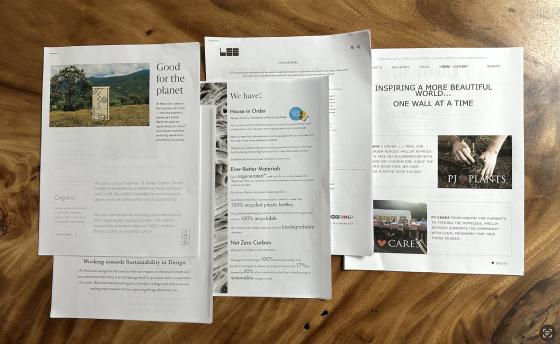Green Building Community
Strategies for Encouraging Continued Green Building Materials Demand and Supply Growth
Posted by: Allison Friedman // Rate It Green Admin

I recently had a sober conversation with a colleague where we agreed we should be further along in quite a few ways than we are in terms of green building. I imagine many people in our wider circle won’t find that view surprising. I do of course hear positive news, especially at the leading edge of sustainable building and design, and there have been great pushes forward in many areas of affordable housing. But why hadn’t green building really reached the mainstream more? Why can’t we find the most impactful and effective ways to explain the health, energy, financial, and environmental benefits of building more sustainable, efficient, and healthy buildings?
The IRA was supposed to distribute so many billions dollars, and yet how many states have had their rebate programs approved? How are the tax credits working for everyone in practice? It seems to me, and some from personal projects experience now, that not everyone knows how to fill out the paperwork as needed or has processes for timely completion. I do remain hopeful for some current projects to work out better, though. But why is it so challenging? Won’t this dishearten and even dissuade some people? We went ahead with a personal HVAC project, but we did so despite knowing the promised rebates might not come in time or be retroactive. We do plan to get the tax credits regardless, but the last thing energy legislation should do is keep anyone from moving forward!
How are your materials specifying and shopping experiences going? On a personal level, I am pleased that have worked with several design professionals recently how have been open and eager to learn more about sustainable products. And yet, the response from manufacturers has been mixed. In a few residential segments, there really don’t seem to me to be more than a small number of available, better items. I can give examples, but I am not looking to disparage particular segments. It is interesting now the difference between some companies saying YES, we have lower impact or more natural products, others openly and refreshingly honestly saying what they are and aren’t doing, and some companies who clearly don’t have sustainable and health information to share, where it’s just not a focus, or they somehow don't find it beneficial enough to share related information for some reason. I find that we’re often buying now from the companies who are open to discussions and can provide SOME information. But it’s not like we can demand an EPD or HPD for every small order, and it’s not like most consumers know what these terms mean.
My easy and strong suggestion is for those of us who want to see materials change for the better to keep asking those who sell and manufacture to do better and to communicate what they are doing - Asking and insisting on information is such a signal to companies and also to retailers and distributors that there is interest. A percentage of the time we ask, it feels like someone who is in some kind of position to make some change says that they have learned from the discussion. We don't always get a positive response, but increasingly we're receiving prepared information or follow up from representatives who seem pleased that their company is doing good and did have some information to share. I always feel that our asking is noted, and that all of the asking adds up.
A second idea is to increase educational efforts, particularly to end users, and I mean consumers. Too often, it seems to me the industry is still talking more to ourselves than to those who can help increase demand and buy these items. There are a small number of awesome nonprofits and yes utilities working hard to provide online and some in person class, which we work to promote in our green building calendar, but there should be more efforts across a greater number of organizations, in all areas. Some good news is seems to me is that there are more electrification and energy efficiency educational efforts, particularly on the push to electrify, and focusing on heat pumps in HVAC, water heating, clothing drying, and to choose electric vehicles.
Another idea is not surprisingly that we have to share inspiring examples and stories, and informative “how to” content. The more we can show people the benefits, and how they can make changes, and the more people can see how projects are done and how this might apply to them, it really seems the more people will feel inspired to take more action! And shares experiences should be honest to have the best impact. What’s easier, what’s more challenging, how have decisions been made, and what would you do the same or differently? I hear so often how important storytelling is, and yet I see only a small group of people making the time to share their experiences.
So many people and organizations are all working hard, don’t get me wrong! But we don’t feel on track for things like 50% clean electricity by 2035, or understanding IAQ and reducing asthma and other health challenges related to indoor air. Too many people don’t know what an indoor air quality monitor is, and would we really know what to do, and be able to do it, if we had the information? I admit I bought monitors for myself, and they’re still in the box. Actually, I both three to learn how they work and to compete them and so I would be able to explain to others how they work, and then I didn’t quite get to this, but I DID loan one out… Now I need to check back with the person who borrowed it to see how it’s going!
I have taken some steps in my professional and personal life to help improve our home and to help others do the same residentially and commercially as well, but like everyone else I am far from perfect. More recently, you can read about our remote hood fan project at home, and our work to upgrade our HVAC systems and to install heat pumps. These are steps in the right direction. I and we all need to do more, and I am eager to read about your work and your projects and to share these with as many people as we can, so we can reach a time where buildings will be substantially healthier and ore sustainable. We’re not there yet, but it’s certainly time to dig in and to try harder and to keep trying, and not at all to give up!
Please be kind and respectful!
Please make sure to be respectful of the organizations and companies, and other Rate It Green members that make up our community. We welcome praise and advice and even criticism but all posted content and ratings should be constructive in nature. For guidance on what constitutes suitable content on the Rate It Green site, please refer to the User Agreement and Site Rules.
The opinions, comments, ratings and all content posted by member on the Rate It Green website are the comments and opinions of the individual members who posts them only and do not necessarily reflect the views or policies or policies of Rate It Green. Rate It Green Team Members will monitor posted content for unsuitable content, but we also ask for the participation of community members in helping to keep the site a comfortable and open public forum of ideas. Please email all questions and concerns to admin@rateitgreen.com

